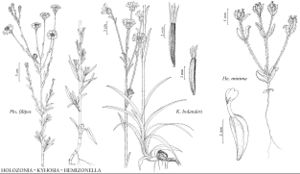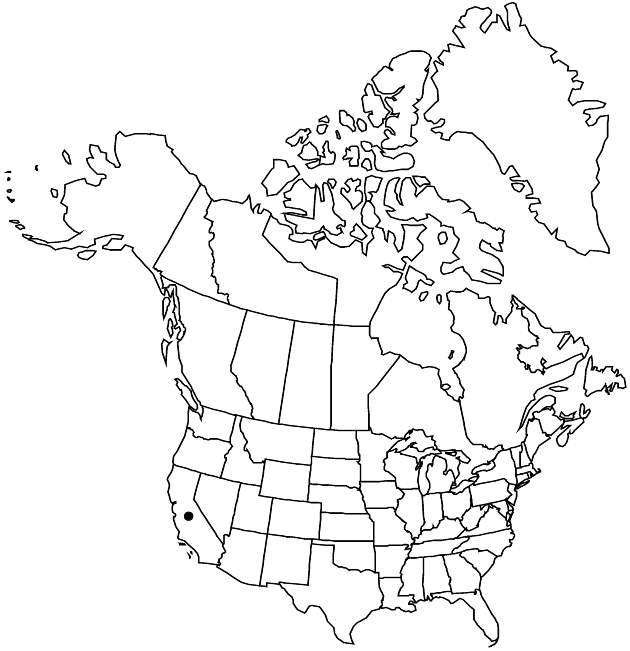Difference between revisions of "Holozonia filipes"
Bull Torrey Bot. Club 9: 122. 1882.
Treatment appears in FNA Volume 21. Treatment on page 294.
FNA>Volume Importer |
FNA>Volume Importer |
||
| Line 47: | Line 47: | ||
|publication year=1882 | |publication year=1882 | ||
|special status= | |special status= | ||
| − | |source xml=https://jpend@bitbucket.org/aafc-mbb/fna-data-curation.git/src/ | + | |source xml=https://jpend@bitbucket.org/aafc-mbb/fna-data-curation.git/src/f6b125a955440c0872999024f038d74684f65921/coarse_grained_fna_xml/V19-20-21/V21_722.xml |
|tribe=Asteraceae tribe Heliantheae | |tribe=Asteraceae tribe Heliantheae | ||
|subtribe=Asteraceae (tribe Heliantheae) subtribe Madiinae | |subtribe=Asteraceae (tribe Heliantheae) subtribe Madiinae | ||
Revision as of 18:49, 24 September 2019
Leaf blades (proximal) 3–10 cm × 2–8 mm. Phyllaries 3–5 mm. Disc corollas 3–4.5 mm. Cypselae 2.5–3.5 mm. 2n = 28.
Phenology: Flowering Jun–Oct.
Habitat: Banks and dry beds of streams and pools, often in rocky sites or alkaline clays
Elevation: 30–600 m
Discussion
Holozonia filipes is the only perennial, continental tarweed with white corollas or filiform peduncles and is unique among the perennials for occurring in low-elevation, summer-hot, interior habitats. Like most of the perennial, continental tarweeds, H. filipes is self-incompatible and has a geographic distribution marked by major disjunctions between some populations.
Selected References
None.
Lower Taxa
None.

